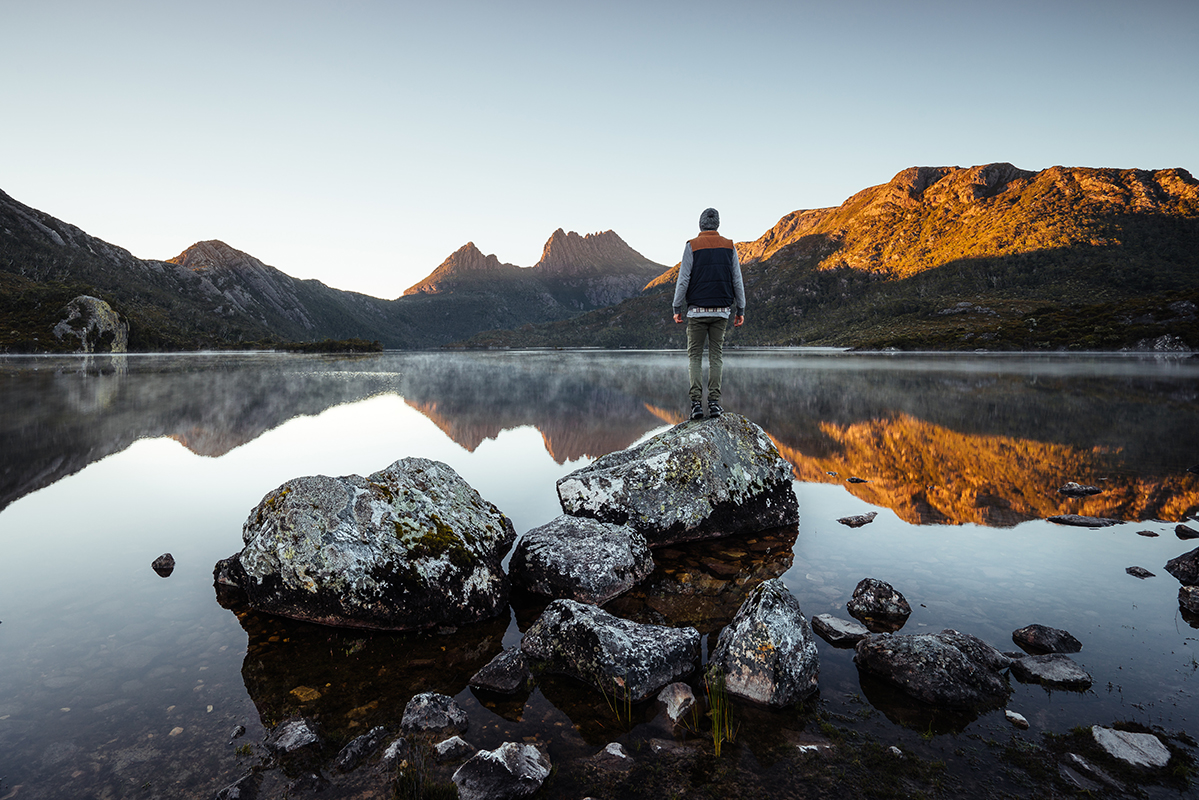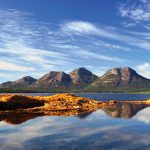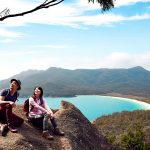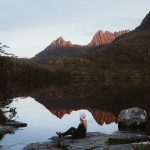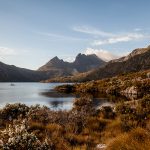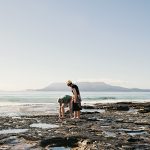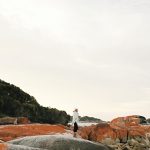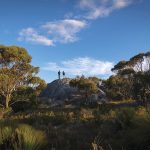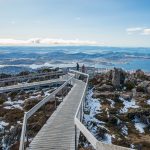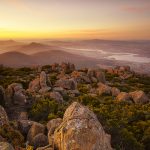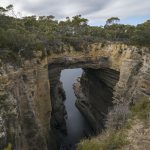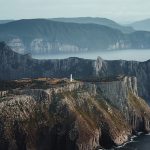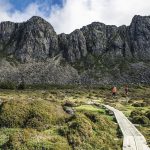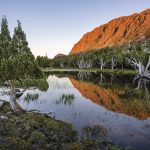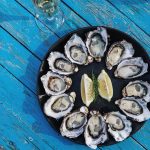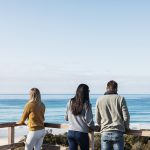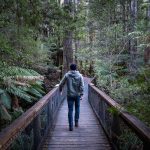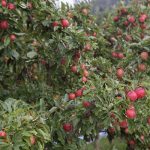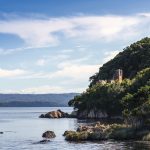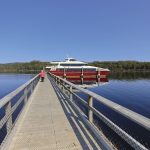If you’re looking for things to do in Tasmania, get ready to embark on a trip like no other.
With jaw-dropping scenery, delectable local produce and nature-packed adventures, Tasmania boasts some of the most unique getaway gems that are ready to discover.
From the pink granite cliffs of Freycinet National Park to the untamable wilderness of Cradle Mountain and the soft, quiet vistas of the Huon Valley; Tasmania lays claim to some of the most enigmatic landscapes in Australia.
All of this natural beauty makes for coveted getaways, whether your style is getting down in nature with some hiking and swimming, or whether you’re more into kicking back with a cool climate wine and sampling the local produce. For all escape modes, Tasmania offers a broad selection of Australia’s most unique getaway experiences.
Freycinet National Park
Every great list of things to do in Tasmania starts with the wild beauty of Freycinet National Park. One of the most iconic sights in Tasmania, the park is best known for the unforgettable Wineglass Bay. Challenge yourself with the bushwalk up to the Wineglass Bay Lookout, or enjoy one of the many other hikes throughout the park. Make sure you pop down to the bay itself for a much-deserved swim or a nap on the pristine white beaches. The Hazards Range are prominent features of the park, and for the photo-chasers, their pink granite peaks look all the more stunning at sunrise. Once you’re done exploring, head a 30-minute drive south to Kate’s Berry Farm in Swansea for some mouthwatering treats at the cafe or a wander through the fields.
- The Hazards, Tasmania. Sourced from Tourism Australia, Photographed by Dan Fellows.
- Wineglass Bay, Tasmania. Sourced from Tourism Australia, Photographed by Hugh Stewart.
Lake St Clair
Within the famous Cradle Mountain National Park lies the deepest freshwater lake in Australia, the majestic Lake St Clair. Just a two-and-a-half-hour drive north-west from Hobart, enjoy a slice of serenity and check out this magical forest-fringed lake. The Indigenous people of the area named the lake Leeawuleena, meaning sleeping water, which speaks perfectly to the relaxing atmosphere. Lake St Clair is the ideal place to take a meandering scenic walk, with both shorter and longer hikes available. This is the end point of the famous Overland Track, so you may even meet some hikers near the end of their long journey. It’s also a great place to enjoy a picnic lunch, take the ferry along the lake, or even grab a canoe and drift along without a care.
- Cradle Mountain, Tasmania. Sourced from Tourism Australia, Photographed by Emilie Ristevski.
- Cradle Mountain, Tasmania. Sourced from Tourism Australia, Photography by Cultivate Productions.
Orford
Wanting to spend a your next weekend getaway driving through the seaside towns along Tasmania’s east coast? It’s time to drop in to the bustling seaside town of Orford. Situated on the gorgeous inlet of Prosser Bay, this fishing town is just a one hour drive north of Hobart, making it the perfect fishing stop or coffee stop. Orford is well known for its bird watching, but it’s also a great place to find a serene corner of one of the many beaches here and read a book. Orford also happens to be the gateway to access Maria Island National Park, a natural wildlife sanctuary equally famous for its fascinating convict history and roaming wombats.
- Spring Beach, Orford, Tasmania. Sourced from Tourism Australia. Photographed by Lisa Kuilenburg.
- Spring Beach, Orford, Tasmania. Sourced from Tourism Australia. Photographed by Lisa Kuilenburg.
Bay of Fires
Another unbelievable natural beauty of Tasmania is the majestic Bay of Fires, located along the north-east of the Island. The area allegedly got its name when Captain Tobias Furneaux saw the burning fires of Indigenous Australians when he sailed past in 1773. Think rocky gullies, orange lichen washed up along the rocks, secluded beaches and maybe even pods of dolphins cruising along parallel to the beach. The wukalina Walk is a four-day guided hike through the inland region of the Bay of Fires – the cultural homeland of the Palawa – a wonderful way to learn some of the rich history and culture of the land. Inland you will also find St Columba Falls, which is one of Tasmania’s tallest waterfalls, with a drop of over 90-metres!
- Bay Of Fires, Tasmania. Sourced From Tourism Tasmania, Photographed By Lisa Kuilenburg.
- Wukalina Walk, Tasmania. Sourced From Tourism Tasmania, Photographed By Rob Burnett.
Mount Wellington
No other capital city in Australia has views like this one. A short drive away from Hobart sits Mount Wellington, known as Kunyani, and in terms of captivating scenery, the drive alone is worth the trip. Interestingly, from base to peak, each new level of the mountain brings a different microclimate – from classic Aussie bush, to temperate rainforest to sub-alpine flora. The summit itself sits at 1270-metres and offers panoramic views of Hobart, Bruny Island, South Arm and the Tasman Peninsula. There’s more to do than just gaze out at the view, with sightseeing and facilities, plus plentiful hikes for different ability levels. On the way back, why not stop in to see the Tasmanian devils at the Bonorong Wildlife Sanctuary or you can get up close and personal with a ringtail possum, tawny frogmouth, wombat and even an echidna.
- Mount Wellington Boardwalk, Tasmania. Sourced from Shutterstock, Photographed by Boyloso
- Mount Wellington, Tasmania. Sourced From Shutterstock, Photographed by Visual Collective
Tasman National Park
This national park is one you really shouldn’t miss, offering some of the best coastal walks in the country and only a an hour-and-a-half drive from Hobart. Tasman National Park is famous for its natural rock formations such as the Tasman Arch, the Devils Kitchen, the Tessellated Pavement and the Remarkable Cave. One particularly Instagrammable spot is the Blow Hole, which, when the waves are right, shoots sprays of saltwater many metres into the air. For the adventurous, this area also boasts lots of adrenaline-fueled activities such as hang gliding, rock climbing and abseiling. For a slower pace, you’ll also find the World Heritage-listed Port Arthur Historic Site nearby, which is definitely worth a visit.
- Tasman Arch, Tasmania. Sourced From Tourism Tasmania, Photographed By Luke Tscharke
- Tasman Island, Tasmania. Sourced From Tourism Tasmania, Photographed by Jason Charles Hill
Walls of Jerusalem National Park
If you really want to immerse yourself in nature, why not schedule a stop to hike the Walls of Jerusalem National Park. This one is for the super keen hikers, with very minimal facilities on site and no road access. As beautiful as many of Tasmania’s other parks are, this region is part of the Tasmanian Wilderness World Heritage Area, but the landscape here really sets a high standard. Think alpine forests amid a high plateau of dolerite peaks, conifer forests, remote lakes and glacially formed moraines. While you can do a day walk into the area, most hikers opt to camp for a night or two and really make the most out of their time. Visitors are advised to be well equipped and take along everything they need to be self-sufficient, which kind of makes it all the more exciting.
- Walls of Jerusalem National Park Hike, Tasmania. Sourced From Tourism Tasmania, Photographed By O&M St John Photography.
- Walls Of Jerusalem National Park, Tasmania. Sourced From Tourism Tasmania, Photographed By Luke Tscharke.
Bruny Island
The pristine Bruny Island is just bursting with things to do and see, and is best explored over a few days to really unwind and get in touch with island life. You can reach the island by ferry, and visitors are usually greeted by some seals and penguins as you sail. After then driving 60-kilometres to the historic Cape Bruny Lighthouse – the second-oldest in Australia – you can enjoy panoramic views or head along one of the nearby walking tracks. If you’re lucky you might catch sight of Bruny Island’s adorable fairy penguins, who waddle ashore each year to nest.
While Bruny is best known for its lighthouse, it doesn’t stop there; with boat tours, bushwalking, surfing, kayaking and fishing opportunities your visit will be non-stop and packed with things to do. When you’ve had enough sightseeing, sample some delectable local produce. For this we recommend partaking in Bruny Island’s Food Trail which includes a visit to Get Shucked for succulent oysters, sampling cool climate wines from Bruny’s only winery, Bruny Island Wine, and indulging in a selection of artisan cheeses from Bruny Island Cheese Co.
- Bruny Island Oysters From Get Shucked, Tasmania. Sourced From Tourism Tasmania, Photographed By Adam Gibson.
- The Neck, Bruny Island, Tasmania. Sourced From Tourism Tasmania, Photographed By Adam Gibson.
Huon Valley
The southernmost point of Australia is Tasmania’s gorgeous Huon Valley. One of the crown jewels of the area is the thermal natural hot spring at Hastings Caves Reserve, replete with stunning forest walks nearby and opportunities to explore the cave systems. The reserve includes the Newdegate Cave which is the largest tourist cave in Australia. Huon Valley boasts historical significance with sites dappled across the region such as the Wooden Boat Centre and the Shot Tower from 1870. The tower is known both for its terrific views of the Derwent River estuary and fascinating insights into the art of making lead gunshot. The valley is also known for its apple orchards, which are transformed into luscious brandies and ciders. For a better taste of the Huon Valley, stop by for a glass of cider at the Apple Shed Museum – you won’t be disappointed.
- Hastings Caves, Tasmania. Sourced From Tourism Tasmania, Photographed By Osborne Images.
- Orchard In Huon Valley, Tasmania. Sourced From Tourism Tasmania, Photographed By Chris Phelps.
Macquarie Harbour
Along the west coast of Tasmania is Macquarie Harbour, stunning viewers with an expanse of water six times the size of Sydney Harbour. The area was originally inhabited by the Lowreenne and Mimegin bands of the Toogee people, and its secluded nature allowed it to remain a paradise longer than other parts of Tasmania, surrounded by jagged mountains and ancient forest. Once it drew European attention, the region became home to one of Australia’s harshest penal colonies. Visit Sarah Island to see where convicts were forced to log trees under harsh conditions and learn about the dark but fascinating part of Australian history. The best way to see the pick of the scenic vistas and historical sites is through a cruise from Strahan, visiting Sarah Island and cruising up the Gordon River.
- Sarah Island, Tasmania. Sourced From Tourism Tasmania, Photographed By Rob Burnett With Tourism Tasmania.
- Sarah Island Landing, Tasmania. Sourced From Tourism Tasmania, Photographed By Graham Freeman With Tourism Australia.
Wanting to explore more of what Tasmania has to offer? Grab your baskets and set off on an adventure at the best fruit picking farms to visit around Tasmania. Or, if you’re more into frolicking through fields, these top lavender farms in Tasmania will have you tantalised by the mesmerising smell.
We acknowledge the traditional owners of country throughout Australia and recognise their continuing connection to land, waters and culture. We pay our respects to their elders past, present and emerging.

